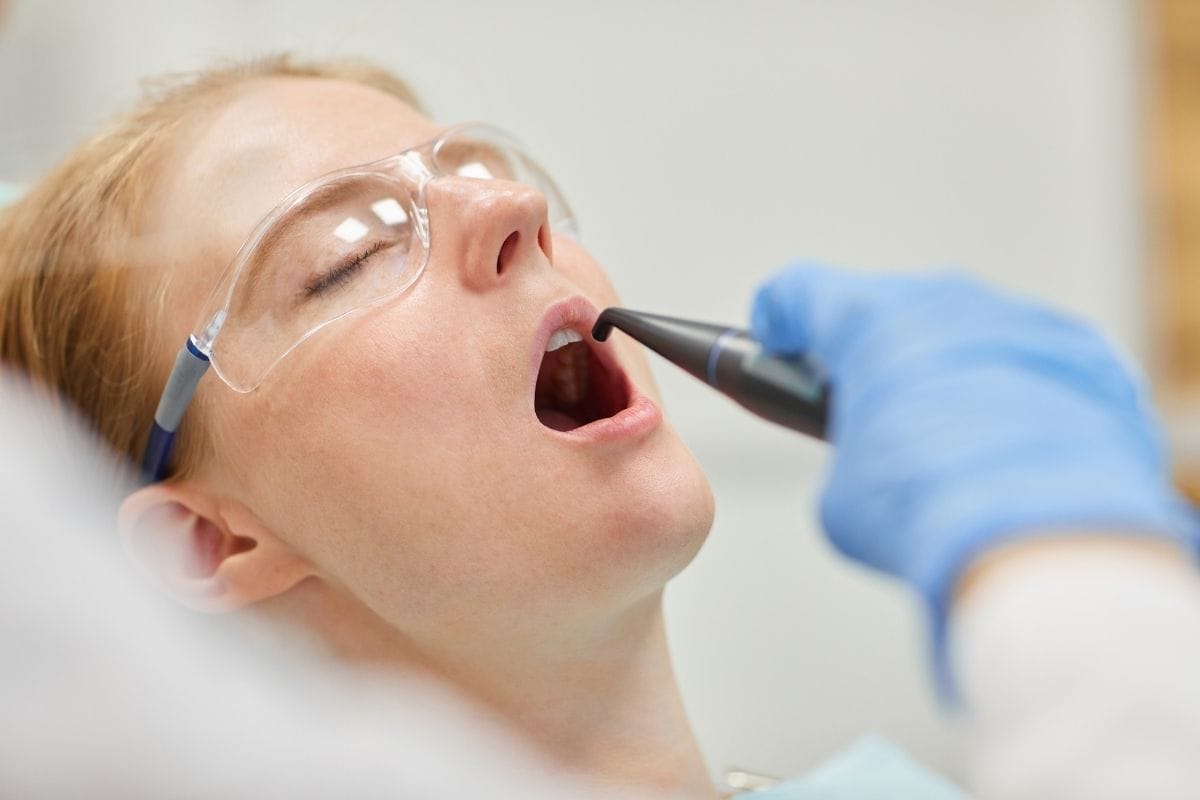Insufficient hygiene can cause an improve of plaque and tartar in the area between the gums and teeth or, as another expression goes “pockets”. The gums will be irritated. In the course of time, and with a continual poor hygiene, tartar and plaque will get to the gums. This could result in ” gingivitis”. This is the beginning of gum disease which is treatable and returning the gum to normal is relatively simple at this point of the issue.
What are Gum Disease Treatment?
Gum Disease Treatment can develop when the gums are infected by bacteria. The infection can cause irritation and inflammation of the gum tissue. Most people will suffer from gum disease at some time in their lives. If Gum Disease Treatment is detected early, treatment without surgery is possible. If the problem worsens and leads to serious complications, Gum Disease Treatments may involve surgery. Treatment of gum disease involves various procedures for the tooth. Dentists perform various treatment procedures to minimize the risk of gingivitis and repair tissues damaged by gum disease.
What are the symptoms of Gum Disease Treatment?
- There are a variety of signs and symptoms of gingival diseases;
- Gums bleeding during tooth brushing
- Sensitive, red and swollen gums
- Inflammatory discharge in the mouth between the gums and teeth
- Teeth that are constantly moving or rocking (creating or enlarging spaces between teeth)
- Upper and lower teeth are used during the process of biting
- Changes in the fit of partial prostheses and loss of fit
- Permanent bad breath
However, the periodontal condition may develop into advanced stages without showing any signs. The disease can progress to. It is therefore crucial to visit the dentist on a regular basis.
What is the cause of Gum Disease Treatment?
The main source of gum disease is the sticky, non-colorless film layer known as dental plaque ‘ which builds up over the tooth. The removal of dental plaque through regular flossing as well as together tooth floss are a fundamental requirement to maintain the health of your mouth. If the plaque isn’t taken off the tooth effectively it can form an unruly and permeable structure referred to as tartar. The harmful substances released from bacteria from plaque cause irritation to the gums. As a result of these compounds they cause irritation to the gums. When the fibrils that connect teeth to gum get destroyed, and the gingiva shifts out of the teeth, and an area of the mouth is created. This makes it more easy for bacteria and their products to spread to deeper tissues. As the disease progresses the pocket gets deeper and bacteria move becomes deeper; it progresses to the bone and eventually, destruction occurs within the alveolar bone that helps support the tooth. If the condition remains untreated at some point, the teeth may shake and extractions might be required.
Who can undergo Gum Disease Treatment?
Gum Disease Treatment, also referred to as periodontal treatment, is vital for individuals facing a range of oral health issues. It is typically recommended for those experiencing symptoms such as gum inflammation, bleeding during brushing or flossing, persistent bad breath, or gum recession. These symptoms often indicate underlying conditions like periodontitis or gingivitis, which require professional intervention. Candidates for Gum Disease Treatment also include individuals seeking preventative care to maintain optimal oral health. Regular dental check-ups help identify early signs of gum disease, allowing for timely treatment to prevent progression and potential tooth loss. Additionally, individuals with specific health conditions that affect oral health, such as diabetes or autoimmune disorders, may benefit from specialized Gum Disease Treatments tailored to their needs. Consulting a qualified dental professional is essential to assess individual oral health status and recommend appropriate Gum Disease Treatment options. These may include non-surgical procedures like scaling and root planing to remove plaque and tartar from below the gumline, or surgical interventions for more advanced cases. Personalized treatment plans ensure effective management of gum health and contribute to overall oral well-being.
How is Gum Disease Treatment Performed?
Gum Disease Treatment can differ based on the severity of the condition. Methods of treatment that don’t require surgery include:
- Teeth cleaning
- Root planning and scaling of teeth
Surgery is a surgical procedure. are as follows:
- Bone graft
- Soft tissue grafts
- Pocket reduction operations
- Guided regeneration of tissues
How is Gum Disease Treatment done?
Gum Disease Treatment for gingival recession and gingival bleeding treatment vary adequate to the severity of the disease as well as the affected tissues disease. A specialist in periodontology deals with treating gum diseases. The initial goal is to eradicate the infection that caused the disease. It is then that spread to the tissues surrounding it. Plaques, the most significant cause of illness are eliminated. Cleaning the dental calculus using ultrasonic technique is a different method to get rid of the root cause of disease. Following this procedure the gingiva changes to the tooth it shrinks, and the pocket in the tissue is removed.
Gum Disease Treatment Advantages
- Improved Gum Health: Treatments such as scaling and root planing remove tartar and plaque buildup, reducing inflammation and promoting healthier gums.
- Prevention of Tooth Loss: Treating gum disease early can stop it from developing to advanced stages when tooth loss is possible.
- Reducing bone loss: Gum disease can cause the bone around your teeth to be lost. Treatment prevents further loss of the bone that supports your teeth.
- Fresh Breath: Treatment of gum disease can stop persistent bad breath (halitosis) due to the buildup of bacterial material in the gums.
- Reduces the risk of developing systemic diseases: There is evidence linking gum disease with other systemic diseases such as diabetes, heart disease and stroke. Treating gum disease can reduce the risk of these diseases.
- Cosmetic Benefits: Dental Health Benefits: Healthy gums add more aesthetic appeal to your smile. They are the hard, pink tissues that surround your teeth.
- Cost savings in the long run: Early treatment of gum disease is often cheaper than dealing with advanced gum disease or tooth loss later on.
- Better overall health: As dental health is closely linked to general health, maintaining healthy gums contributes to improved overall health and well-being.
The overall impact of Gum Disease Treatments is not just that they address dental health issues that arise immediately,
Gum Disease Treatment Disadvantages
- Multi-Visits: Gum disease treatment often will require several appointments with the dentist, or a periodontist which may be difficult for certain people.
- Potential Gum Sensitivity: after treatment, gums could be tender or sensitive for a certain period of time, particularly if extensive cleans or surgical processes are being performed.
- The risk of tooth sensitivities: In some instances the teeth can become sensitive to cold, hot or pressure following treatments for gums.
- Potential for Gum Recession: In certain instances an aggressive or ineffective treatments can result in gum recession that could expose the root of the tooth and boost the sensitivity of the tooth.
- Risks of Surgical Treatment: The surgical treatments for gum disease come with inherent risks including bleeding, infection or other complications arising from anesthesia.
- Maintenance Requirements: Maintaining the health of your gums after treatment is often a matter of diligent dental hygiene and regular dental visits which could require more time and effort.
- Not always 100% Curative: In certain advanced instances, gum disease might remain uncurable, and might require ongoing treatment to avoid recurrence.
Frequently Asked Questions About Gum Disease Treatment
Below you will find answers to your questions
What are the signs that I might need Gum Disease Treatment?
Signs may include red, swollen gums, bleeding gums (especially when brushing or flossing), persistent bad breath, receding gums, loose teeth, or changes in your bite. Regular dental check-ups can also help detect early signs of gum disease.
What are the types of Gum Disease Treatments available?
Common Gum Disease Treatments include professional dental cleaning (scaling and root planing), antibiotic treatments (oral or topical), surgical treatments (such as flap surgery or gum grafts), and in advanced cases, laser therapy or guided tissue regeneration.
Is Gum Disease Treatment painful?
The level of discomfort can vary depending on the severity of gum disease and the type of treatment. Routine professional cleanings may cause minor discomfort or sensitivity, while more invasive procedures might require local anesthesia to manage pain during and after the treatment.
How long does Gum Disease Treatment take?
The duration of Gum Disease Treatment can vary widely based on the severity of the gum disease and the specific treatment plan recommended by your dentist or periodontist. Routine cleanings may take an hour or less, while more complex treatments or surgeries may require multiple visits over several weeks.









